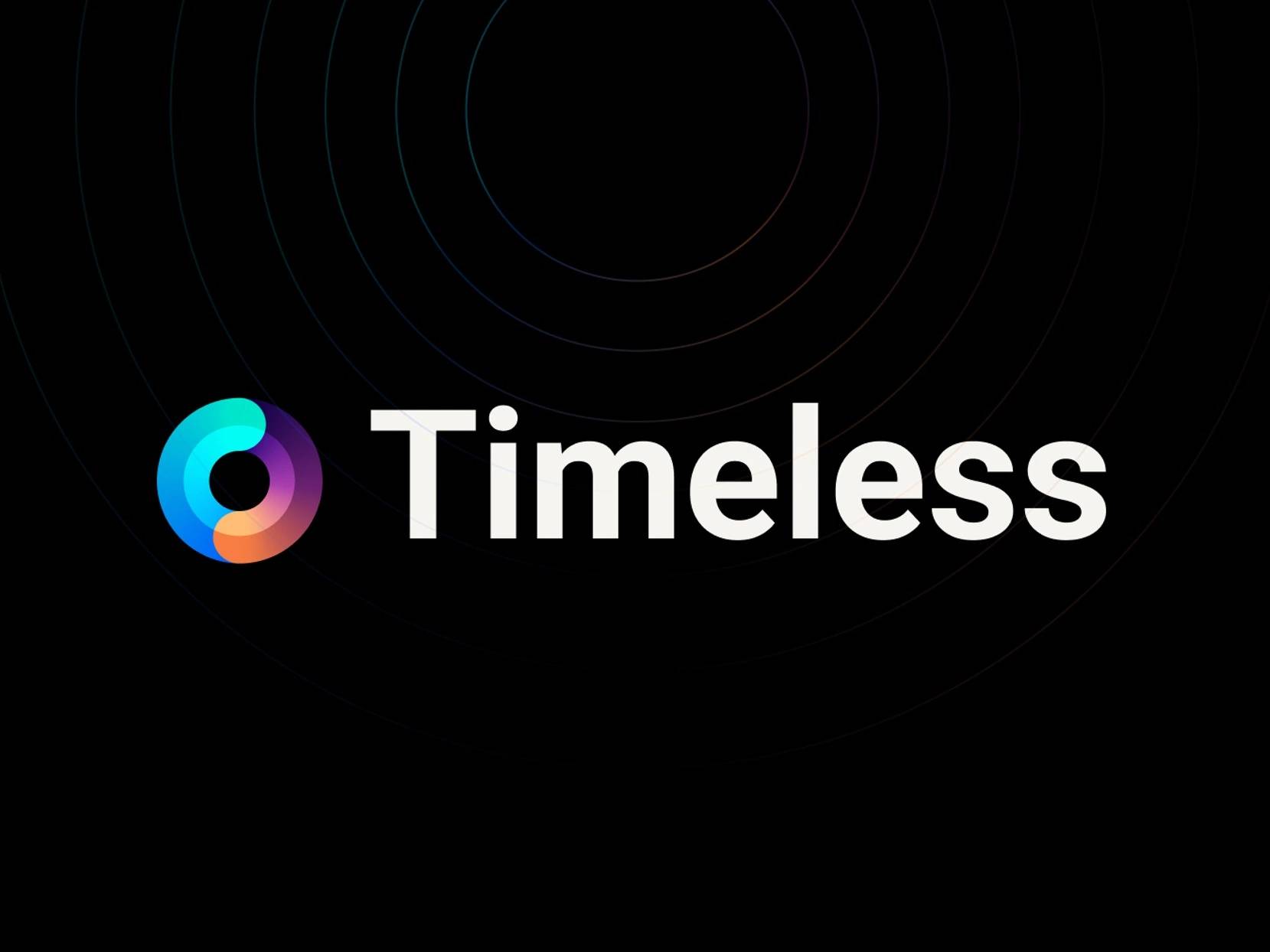Subscribe to wiki
Share wiki
Bookmark
Timeless
The Agent Tokenization Platform (ATP):Build autonomous agents with the Agent Development Kit (ADK)
Timeless
Timeless is a yield tokenization protocol that offers Perpetual Yield Tokens (PYTs), which give their holders a perpetual right to claim the yield generated by the underlying principal. Timeless also offers Negative Yield Tokens (NYTs), a protocol-native way to short yield rates. [1][2][3]
Overview
On June 20, 2022, Timeless launched on the Ethereum Mainnet. Timeless is built on the Ethereum Virtual Machine (EVM) and deployed to EVM-compatible blockchains. The protocol enables use cases such as Yield boosting, Yield hedging, and Yield speculation. [4]
In September 2022, Timeless raised an angel round from some reputable angels in the crypto space. They include; 0xMaki, PEPO, Daryl Lau, Scott Sunarto, Fisher8, IT DAO, etc. [9]
"The angel round enables us to further our mission of building open and permissionless infrastructure in the DeFi space, by funding our growth and bringing value-add angels onboard" - the team stated[9]
In January 2023, Timeless launched its token, Liquidity Incentive Token (LIT) on its liquidity engine, Bunni — a liquidity engine initially released in October 2022 and built on top of Uniswap v3. [10]
"By launching LIT, we hope to enable other projects to incentivize their token liquidity with capital efficiency orders of maginitudes higher than current levels. We also plan to use LIT ourselves to bootstrap liquidity for the Timeless yield markets."[10]
Yield Tokenization
Yield tokenization involves separating the yield stream from a yield-bearing asset (such as the Yearn USDC vault) and assigning it to another token. In the context of Timeless, this process results in the creation of Perpetual Yield Tokens (PYT) and Negative Yield Tokens (NYT). [5]
Users deposit assets into Timeless to mint PYT and NYT, and they can redeem their assets by burning both PYT and NYT. Each yield source, like the Yearn USDC vault, corresponds to a specific pair of PYT and NYT, allowing users to choose the desired yield source for their deposits. [5]
Perpetual Yield Token (PYT)
Timeless Perpetual Yield Tokens (PYT) symbolize future yield streams generated by the associated principal amount. Each PYT corresponds precisely to one underlying principal, simplifying accounting processes. [1][6]
For instance, if a PYT utilizes the Yearn USDC vault for yield generation, owning 1 PYT entitles the holder to claim the yield generated by 1 USDC in the Yearn USDC vault indefinitely into the future. [6]
PYTs offer practicality as their prices align with the yield rates of the respective yield-generating vaults they utilize, facilitating speculation on yield rates. They also serve as a tool for yield boosting, enabling users to purchase PYTs at a discount from the market to enhance their overall yield earnings. [6]
Negative Yield Token (NYT)
Timeless Negative Yield Token (NYT) is automatically generated alongside Perpetual Yield Token (PYT) issuance, with a 1:1 ratio. NYT plays a crucial role in redeeming the underlying principal: burning 1 PYT and 1 NYT together returns 1 underlying asset. [1][7]
Unlike PYT, NYT holders do not receive any yield from the underlying. However, NYT's value proposition lies in its inverse correlation with PYT's price, always summing up to 1 in terms of the underlying asset. This property makes NYT valuable for yield speculation, where investors anticipate a decrease in yield rates, and for yield hedging, allowing the reduction of yield volatility in the portfolio. [7]
Compounded Perpetual Yield Token (xPYT)
xPYTs are automated compounding vaults designed to reinvest the yield generated by PYTs, resulting in the accumulation of additional PYTs. [1][8]
Managed in a permissionless manner, anyone can trigger the auto-compounding process and earn a fee. This functionality is facilitated by MEV bots, ensuring that auto-compounding occurs in a decentralized manner without reliance on centralized infrastructure. xPYT was introduced for composability, efficiency, and the simplicity involved. [8]
Utility
Yield Boosting
Yield boosting refers to the strategy where instead of depositing funds into a farm (e.g. Yearn USDC vault), users utilize funds in the purchase of the corresponding PYT on the market (e.g. Yearn USDC vault PYT). [4]
Yield Hedging
Yield hedging involves a strategy where users: earn yield directly from platforms like Aave using a portion of their portfolio and purchase Negative Yield Tokens (NYT) corresponding to the same yield source. Incorporating NYT into one's portfolio serves to reduce the volatility of the yield rate earned in both directions. [4]
Yield Speculation
Yield speculation involves leveraging PYT or NYT tokens to speculate on future yield rates. In the case of longing, users anticipate an increase in the yield rate and opt to purchase PYT. By doing so, they stand to profit if the yield rate indeed rises. Conversely, shorting entails the belief that the yield rate will decrease. In this scenario, users acquire NYT, aiming to capitalize on a potential decrease in the yield rate. [1][2][4]
See something wrong?
The Agent Tokenization Platform (ATP):Build autonomous agents with the Agent Development Kit (ADK)
